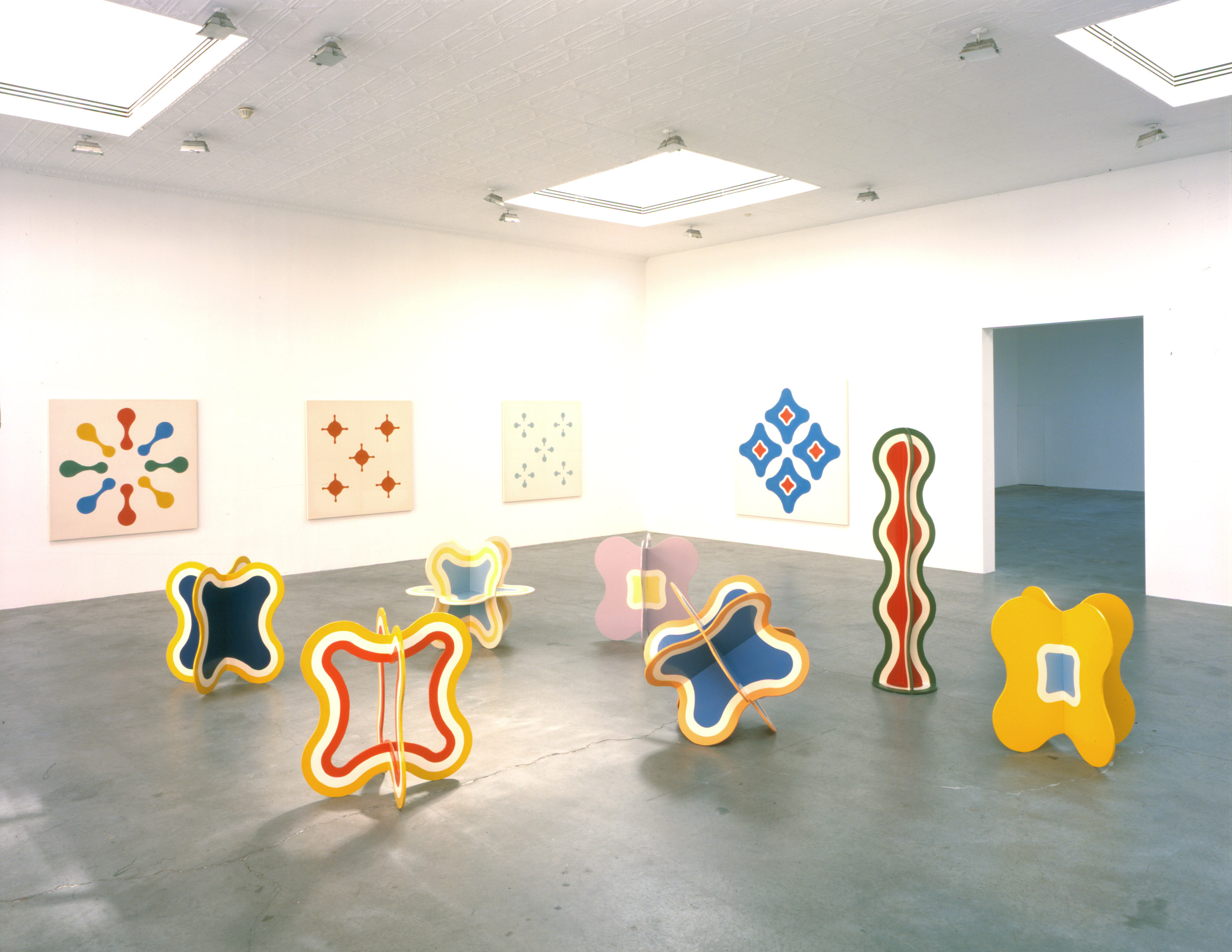- Paul Feeley
Infobox Artist
bgcolour = #6495ED
name = Paul Feeley

imagesize = 250px
caption = Installation of Paul Feeley's work at the Matthew Marks Gallery in 2002
birthname =
birthdate = 1910
location =Des Moines, Iowa
deathdate = 1966
deathplace =New York City ,New York
nationality = American
field =Painting
training =
movement =Color Field painting
works =
patrons =
influenced by =
influenced =
awards =Paul Feeley (b.1910
Des Moines, Iowa - d.1966New York City ,New York ) was an artist and director of the Art Department atBennington College during the 1950s and early 1960s.Biography
At Bennington College, he was fundamental in establishing its art department. Committed to the art of his contemporaries, he exposed his students —
Helen Frankenthaler among them — to many of the most significant artists of his time. He helped to organize the first retrospective exhibition ofmodernist sculptor David Smith, in 1951 Fact|date=August 2008 and helped with the 1955Hans Hofmann [ [http://www.hanshofmann.org/chronology Hans Hofmann Estate:In 1955Clement Greenberg organizes a small retrospective of Hofmann's paintings at Bennington College in Vermont.] and the 1952Jackson Pollock retrospectives which were both organized byClement Greenberg . [Exhibition Catalog;Kirk Varnedoe with Pepe Karmel, "Jackson Pollock ",The Museum of Modern Art , 1999, "Chronology," by Elizabeth Levine and Anna Indych p.327] Feeley and Greenberg also organized aKenneth Noland Exhibition at Bennington in 1961. [ [http://query.nytimes.com/gst/fullpage.html?res=9A06E6DC143AF933A05752C0A96E958260 Grace Glueck, NY Times: ART REVIEW; "During a 60's Interlude, Color Was the Content;" January 30, 1998] ]Feeley was also an an important Color Field painter [ [http://www.sharecom.ca/greenberg/ppacatalog.html Post-Painterly Abstraction artist bios retrieved online July 21, 2008] ] and in the early 1960s he was included in the catalog and exhibition called
Post-Painterly Abstraction organized byClement Greenberg in 1964. [ [http://www.sharecom.ca/greenberg/ppaessay.html Greenberg essay, retrieved online July 21, 2008] ] Feeley had his first full scale retrospective (held posthumously) at theMatthew Marks Gallery , 2002 inNew York City . [Paul Feeley, "Painting and Sculpture", New York: Matthew Marks Gallery, 2002. (Henceforward as Feeley 2002)] .Work
His paintings are characterized by bright colors; simple, abstract forms; and symmetrically arranged, but serene, compositions. Clement Greenberg included Feeley’s work in his exhibition Emerging Talent at the Kootz Gallery in 1954, alongside other Color-Field painters like
Morris Louis andKenneth Noland . Critics have argued that his work is distinct from Color Field painting in its classical rigor and forms, whether derived from ancient Greek and Moorish decorative patterns or Cycladic and Egyptian statues.Art critic Gene Baro argued that the Color Field classification was in certain ways inappropriate. He saw Feeley's work as something wholly independent and not dialectically related to theAbstract Expressionist legacy - "in the way thatBaroque art is remote from ancient Egyptian art and presumes different standards of value and habits of mind." [Gene Baro, "Paul Feeley: The Art of the Definite", "Arts Magazine, February 1966. Excerpted in (Feeley 2002, pg. 80)]Paul Feeley was a veteran of more than 18 solo exhibitions in important contemporary galleries and dozens of group exhibitions in important museums. During the late 1950s through the mid 1960s he was represented by the
Tibor de Nagy Gallery, and then theBetty Parsons Gallery inNew York City where he had nine solo exhibitions. He also had exhibitions of his paintings and sculpture inLondon at the Kasmin Gallery and at the Nicholas Wilder Gallery inLos Angeles .Recently, he has been the feature of solo shows at the Jablonka Galerie, 2006; Lawrence Markey, 2007; the Bennington Museum, 2008; and the
Matthew Marks Gallery , 2008. Feeley’s work is held in major museum collections around the world including theMuseum of Modern Art , theWhitney Museum of American Art , and theSolomon R. Guggenheim Museum .ee also
*
Color Field
*List of Bennington College people References
External links
* [http://www.paulfeeley.com Paul Feeley.com]
* [http://www.matthewmarks.com/index.php?n=1&a=138&im=1 Paul Feeley at Matthew Marks Gallery]
Wikimedia Foundation. 2010.
